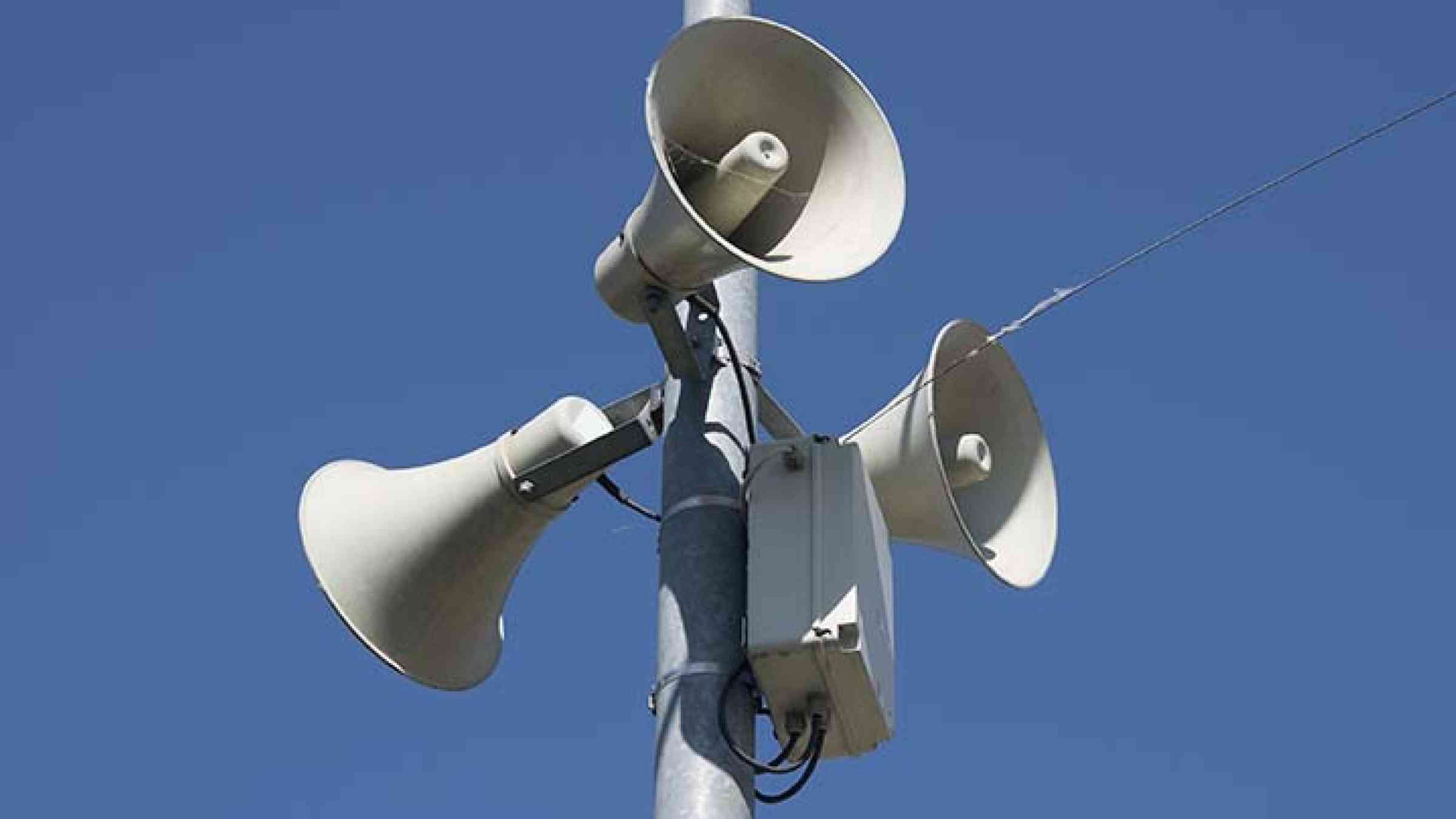Early Warning Systems must address risks in fragile and conflict-affected contexts

Less than half of the Least Developed Countries and only 40% of Small Island Developing States have a multi-hazard early warning system. The most vulnerable of all are people and communities affected by fragility, conflict and violence.
The UN Office for Disaster Risk Reduction (UNDRR) and WMO Centre of Excellence for Climate and Disaster Resilience and international partners are therefore releasing a Handbook on Early Warning Systems and Early Action in Fragile, Conflict, and Violent (FCV) Contexts.
The new handbook will provide guidance for the rollout of Early Warnings for All initiative, including in 30 countries earmarked for priority attention.
It provides basic guidance on the best way forward, including:
- Supporting the rollout of early warnings and early action in fragile, conflict and violent contexts,
- Fostering common understanding and expectations,
- Enabling concerted planning and implementation approaches,
- Orienting investments in favour of the most vulnerable people and communities
- Supporting multi-stakeholder and cross-sectoral collaboration
- Strengthening learning and monitoring.
“In a world defined by escalating climate injustices, early warning systems are the most basic tool for saving lives and securing livelihoods. Countries that are vulnerable to extreme weather, especially Small Island Developing States and Least Developed Countries, and the entire African continent, should have the highest rates of protection. But they are well below the global average,” UN Secretary-General António Guterres told a high-level event at COP28.
Of the top 25 most climate vulnerable countries, 19 are fragile and/or conflict-affected, illustrating the alarming intersection of fragility, conflict and violence with growing disaster, including climate, risks.
Establishing, strengthening and maintain multi-hazard early warning systems (MHEWS) remains critically underfunded – especially in fragile and conflict affected contexts – despite being a crucial component of adaptation and risk reduction. Indeed, of the 70 very highly vulnerable or highly vulnerable countries that received the lowest amount of climate change adaptation or disaster risk reduction funding per person, 17 were suffering from protracted crisis and 27 were considered fragile or extremely fragile.
Somalia is an example
Having endured years of deadly drought, the country is now suffering from devastating flooding, which has displaced tens of thousands of people and flooded an estimated 1.5 million hectares of farmland.
Extreme weather and climate change impacts are worsening the competition for scarce resources like water and pastureland.
“Climate change amplifies the risk of food security and weather patterns, exacerbating tension and migration which strain already fragile systems,” Jama Taqal Abbas, Minister of Energy and Water Resources,” told the event at COP28. But he said that, in the face of these challenges, there are opportunities.
“Somalia can harness resilience and innovation to not only mitiate impacts but build more sustainable future. Early warning systems have the power to be a catalyst for change and to respond to climate related shocks, protecting lives and livelihoods. We can foster community resilience and adaptive capacity,” he said.
WMO is working with Somalia and the other 30 priority countries to try to fast-track the rollout of early warnings. The Climate Risk and Early Warning Systems initiative is funding efforts to strengthen weather and climate services in fragile, conflict and violent contexts – for instance in Burkino Faso and Haiti. And it is working to close the observation gap on the ground.
COP28
At COP28, WMO is working to reprioritize and channel resources to fragile contexts, as galvanized by the COP-28 Presidency through the 'Getting Ahead of Disasters' Charter.
The Handbook is co-designed and co-produced with stakeholders across the EWS value cycle to ensure coordinated and common efforts to scale up EWS-EA in FCV contexts, adapted to the local context.
An accompanying policy paper has been prepared with the emerging priorities of the Handbook, as an additional input to the COP 28 discussion.
“The commitment to act in favour of communities affected by FCV does not stop at COP-28. Our priority for 2024 is to work with countries, communities, and technical and financial partners to operationalise and roll out the Handbook, and gather learnings to continue to drive forward climate action in contexts affected by fragility, conflict and violence. Investing in MHEWS in FCV contexts is a crucial step to ensure that the last are put first,” says the policy paper.
The UNDRR/WMO Centre of Excellence benefits from the participation of the following agencies: Food and Agriculture Organization (FAO), Group on Earth Observations (GEO), International Federation of Red Cross / Red Crescent societies (IFRC), The International Organization for Migration (IOM), International Science Council (ISC), UN Development Programme (UNDP), UN Environment Programme (UNEP), UN Education, Scientific and Cultural Organization (UNESCO), The United Nations High Commissioner for Refugees (UNHCR), UN Institute for Training and Research (UNITAR), UN Office for the Coordination of Humanitarian Affairs (UNOCHA), UN University (UNU), World Bank (WB), and World Food Programme (WFP).